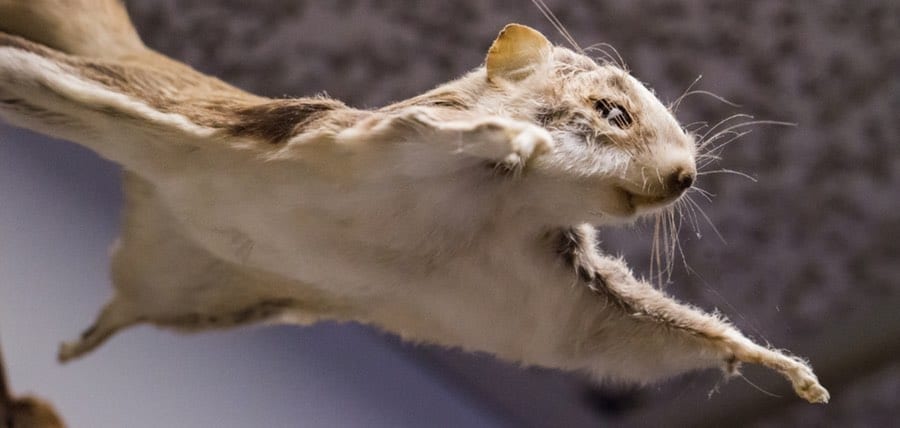Northern vs. Southern Flying Squirrel
You live in the New Jersey area and start to hear some commotion in the attic. It could be flying squirrels. These animals like to be in warm areas during the winter. Flying squirrels are also nocturnal, which means you may not see them.
If you do happen to see a flying squirrel, there are a few ways to distinguish these animals. There are southern and northern flying squirrels. Once you know the difference, you may be better equipped to keep your home safe from these rodents.
Southern Flying Squirrel
Southern flying squirrels live in the eastern portion of the United States. They are also found in parts of Canada, as well as Central America and Mexico. Adult southern flying squirrels build several nests since they leave nests once they become dirty or infested with fleas. Near the end of summer, these squirrels store food in their nests. Southern flying squirrels eat acorns, hickory nuts, and beechnuts. The animals will sometimes build their nests in birdhouses. In this case, they will eat suet and sunflower seeds. Southern flying squirrels eat more animal-based foods than other squirrels. They will feed on carrion, as well as bird eggs and mice.
These rodents are also the most nocturnal of all the squirrels. They also don’t spend much time on the ground. Instead, they live in trees, where they can easily hop over obstacles. Southern flying squirrels gestate for 40 days and typically produce three or four babies per litter. In some rare cases, the squirrel litter can have between two and seven babies.
Northern Flying Squirrel Facts
The northern flying squirrel is a small animal, about 10 inches long. The animal has a long, flat tail and large round eyes for enhanced night vision. The squirrels are nocturnal. Northern flying squirrels are brown or gray in color and have off-white fur on their bellies. The squirrel lives in both conifer and deciduous forest areas. Northern flying squirrels are omnivores. They eat fruits and fungi and feed on bird eggs and insects. Northern flying squirrels breed from March until May. The female squirrel delivers between two and five babies per litter. The gestation period is 40 days.
You can find the rodent in the northern region of the United States. This includes the states of Washington, California, Michigan, Alaska, Wyoming, and Utah. These squirrels can also be native to the New England states and are found in Canada as well. The animals are very social and can share a nest with up to eight squirrels.
Flying Squirrel Characteristics
- often sounds like the circus is in town-like jumping
- usually lives in numbers (communal living)
- often confused with mice
Where Do Flying Squirrels Live?
Flying squirrels like to live in places where they can be well-hidden. This is why they make their homes in the hollows of trees, in most cases. And, they mostly build their own nests. However, if the squirrels discover a warm area in your attic or shed, they will nest there. As indicated by their names, flying squirrels can live in the northern or southern part of the world.
Are Flying Squirrels Dangerous?
Flying squirrels don’t normally attack people. However, they can chew through the wiring, pipes, drywall, and insulation of homes. This can lead to electrical damage, as well as fire and water damage. This is why it’s best to get rid of the squirrels as soon as you notice them on your property.
Are Flying Squirrels Extinct?
Flying squirrels were previously on the endangered species list, particularly the northern flying squirrel. The animals received endangerment protection consideration in 2014, according to Scientific American. The squirrels living in the northern region of the country faced endangerment because of drought and other extreme weather changes.
Removal of Flying Squirrels
To safely and effectively remove squirrels from your property, call the expert professionals at NJ Pest. Our friendly and knowledgeable staff is here to answer all your questions and provide expert pest removal services. For more information, contact NJ Pest Control.

